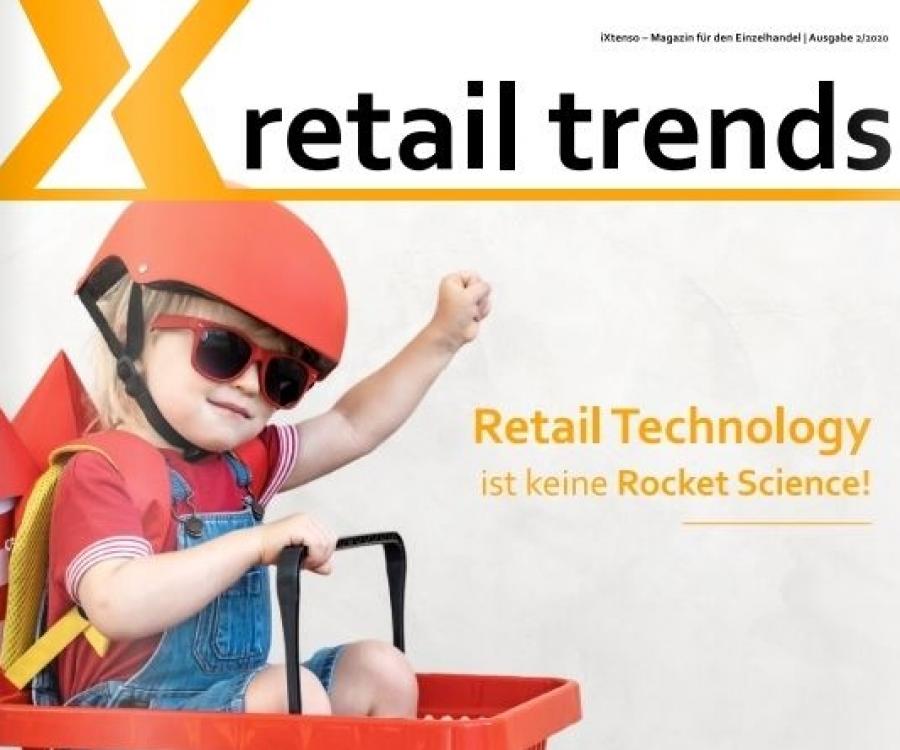Thomas Willing, Managing Director of Avery Dennison Central Europe had every reason to smile at the EuroCIS because Gerry Weber received the Award for Innovation from the EHI (Association of the European Heating Industry) for introducing its anti-theft system with RFID. During production, the fashion retailer has newly developed care labels by Avery Dennison, which contain a RFID transponder, sewn into all its textiles. In this interview, Willing describes the collaboration and talks about the future of RFID
At the EuroCIS Gerry Weber received the Award for Innovation, which you also have to be happy about. When did you start this collaboration?
Gerry Weber is one of our best and most loyal clients. We have worked together for over 25 years. The recently arranged, groundbreaking RFID-solution was preceded by a two year readjustment-and validation process, where we developed the best solution for Gerry Weber and its demands together with all its other system partners. From the customer’s point of view this process was at first open-ended, but then determinedly led to Avery Dennison. What spoke in our favor aside from experience, was the fact that we hold 90 percent of market share for RFID labels in the textile industry and offer service offices world-wide.
Please describe the most important stages of development. What role did AD play, what influence, what demands did Gerry Weber have?
Gerry Weber was looking for a source-tagging-solution, meaning a possibility to firmly apply RFID already during the production process and adopt it into the entire supply chain. This is why we developed the world’s first care label with an integrated RFID-Inlay.
There was another client request regarding quick amortization of investment costs. The connection of RFID and electronic article surveillance (EAS) promised the best results. An intense testing phase completely confirmed this.
The Gerry-Weber-label survives two washing cycles – is that a neat bonus or a sensible feature?
The washability is more than just a nice feature. It was the prerequisite for source tagging. During transport it often happens that individual articles of clothing get stained and afterward have to get cleaned and reconditioned. To survive this process, our RFID care label needs to be able to withstand two washes or a chemical cleaning if necessary. Without this feature, we would have had to place the transponder and chip in a cardboard tag for example.This would not have rendered the combined EAS functionality impossible, but it would have been less secure.
Why? Can’t a clever thief just remove the care label with scissors and calmly walk out of the store?
We know from experience in other retail security projects with sewn-in security tags that this happens only rarely. The concealed application and the 100 percent protection of all goods provide an excellent security level. It is –also due to the very good detection rates- considerably above that of previous systems.
How will consumers react to RFID in textiles in your opinion?
No personal data is stored on the label, and the item number provides no link to the customer. For this you would need a link-up to credit card data. This is and remains illegal in Germany and also has nothing to do with RFID. Data protection requirements in this country are very high and that is a good thing.
Just the same, I believe that every RFID-user would be well advised to completely and honestly tell its customers about the purpose of the RFID technology. Gerry Weber uses large and easy-to-understand signs in each of its stores, which inform the customers about the purpose of this application. This prevents false speculations and eliminates potential fears. At Gerry Weber stores, after their purchase, customers can immediately remove the care label and cut out the RFID piece. The care instructions remain in the garment, and the retailer does not store any customer-related information
Which market opportunities do you see for the care label with RFID anti- theft protection? How were reactions at the EuroCIS?
For Gerry Weber, the combination of RFID and EAS emerged as the optimal solution.
I can think of several other clients which would be well served with a similar solution. With a new client, it is necessary though to first investigate all parameters of its supply chain and its distribution channels before we can recommend a RFID solution. At the EuroCIS and also at the CeBIT in Hannover, the interest in the Gerry Weber solution was huge.
Which general trends are you noticing in terms of anti-theft protection with RFID?
The trend in anti-theft protection clearly is toward clever solutions. EAS is a feature everybody needs, but you do not have to make it so obviously noticeable. The time for plastic hard tags that can damage material and that are only limited in their use, has been running out for a while. Wireless tags at a store entrance will also be replaced. The future belongs to intelligent combined solutions with RFID, which are geared to retail needs.
Is this not like the tortoise and the hare? The retail market uses new technology against thieves and thieves are getting more sophisticated. In view of that, is it worth it for a small speciality retailer to invest in anti-theft protection with RFID?
Absolutely, since the technical possibilities develop faster than the finesse of thieves, especially since retailers also buy additional advantages with RFID: With intelligent RFID solutions, inventory accuracy increases to 99 percent, and you practically get continuous inventory. Since the retailer always knows what he needs to reorder, he will see turnover increases of up to 15 percent.
In 2007 Avery Dennison acquired the RFID specialist Paxar. Since then you combine labels with RFID. How did retail profit from this?
Just like Paxar, Avery Dennison has worked a long time on RFID solutions, only the focal points were distributed slightly differently. At first, Avery Dennison placed its focus on technology and developed a very competitive portfolio of RFID inlays, which could also be produced with lower cost. In RFID and clothing care labels, Paxar held the better market position in Western Europe, especially because of its RFID solution it already developed in 2003 for the British department chain Marks & Spencer. This was certainly one argument for the merger. Today both complement each other perfectly.
Interview by René Schellbach
eurocis.com











